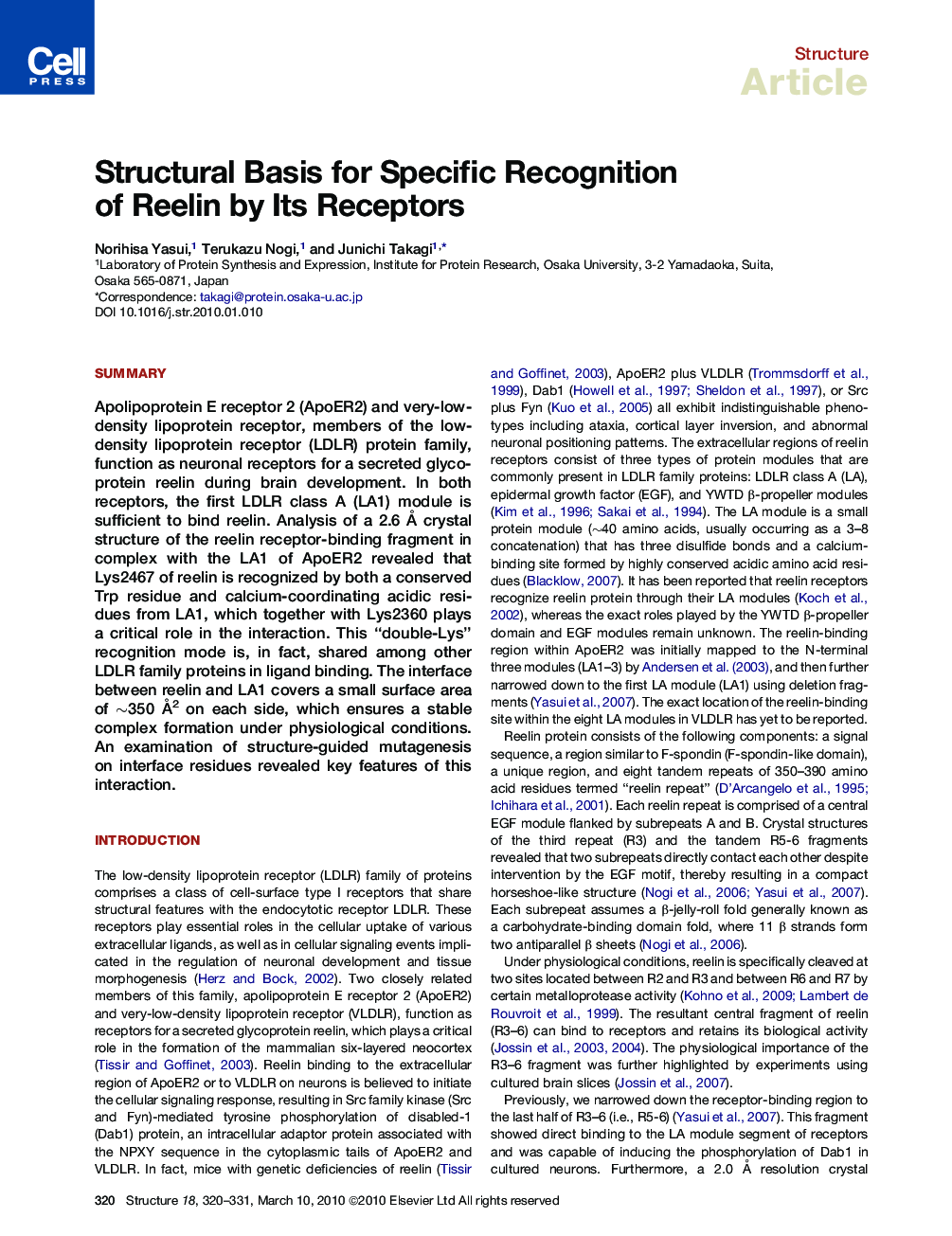| Article ID | Journal | Published Year | Pages | File Type |
|---|---|---|---|---|
| 2029948 | Structure | 2010 | 12 Pages |
SummaryApolipoprotein E receptor 2 (ApoER2) and very-low-density lipoprotein receptor, members of the low-density lipoprotein receptor (LDLR) protein family, function as neuronal receptors for a secreted glycoprotein reelin during brain development. In both receptors, the first LDLR class A (LA1) module is sufficient to bind reelin. Analysis of a 2.6 Å crystal structure of the reelin receptor-binding fragment in complex with the LA1 of ApoER2 revealed that Lys2467 of reelin is recognized by both a conserved Trp residue and calcium-coordinating acidic residues from LA1, which together with Lys2360 plays a critical role in the interaction. This “double-Lys” recognition mode is, in fact, shared among other LDLR family proteins in ligand binding. The interface between reelin and LA1 covers a small surface area of ∼350 Å2 on each side, which ensures a stable complex formation under physiological conditions. An examination of structure-guided mutagenesis on interface residues revealed key features of this interaction.
Graphical AbstractFigure optionsDownload full-size imageDownload high-quality image (407 K)Download as PowerPoint slideHighlights► This is the first crystal structure available for the reelin/receptor complex ► Reelin-receptor interaction is mediated by very small interface ► In both receptors, single LDLR class A module is sufficient to bind reelin ► The “double-Lys” recognition mode is shared among LDLR family proteins
